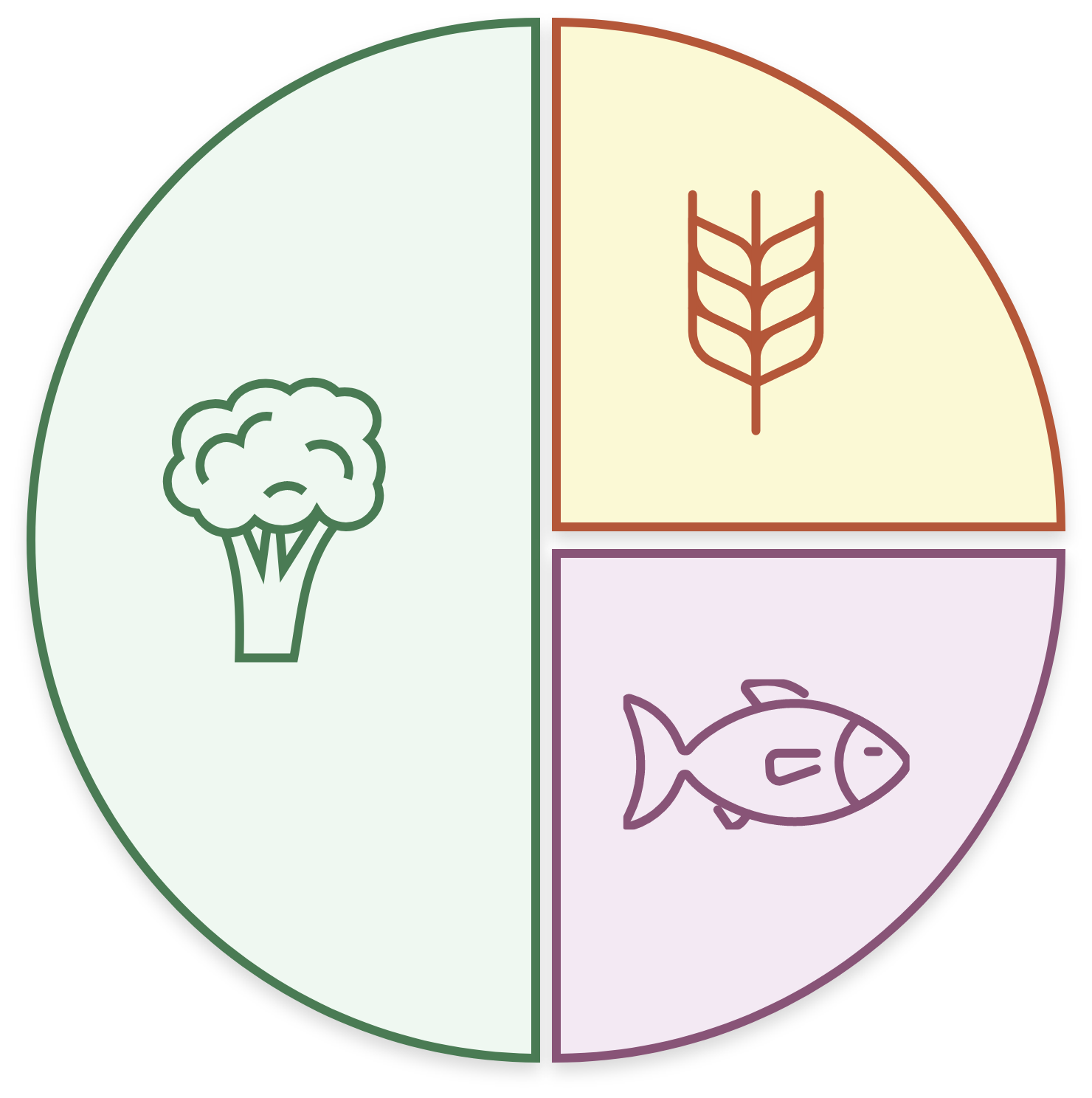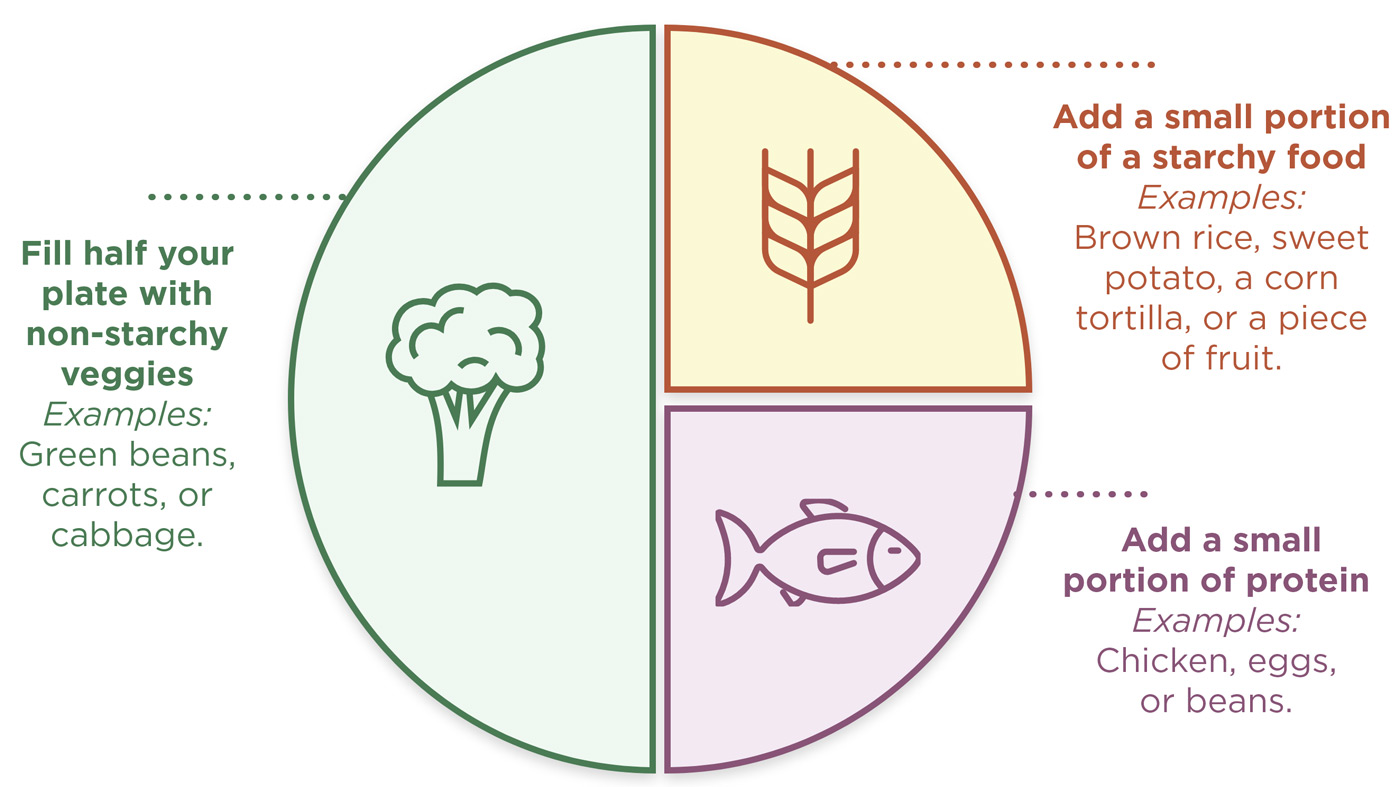
The Pre-Diabetes Diet Plan
- Home
- Live Well Blog
- The Pre-Diabetes Diet Plan

Sofia wanted to have another baby.
But her doctor said she had pre-diabetes—and it could turn into diabetes if she didn’t make some changes.
She knew that because she had gestational diabetes (diabetes during pregnancy) when she had her son, this meant she had a higher chance of getting diabetes later in life.
Sofia didn’t give up—she got help and made a plan.
You can too!
Pre-diabetes means your blood sugar is a little too high.
It’s not diabetes yet, but it can turn into diabetes if no action is taken.
Doctors use these numbers to check:
You can often reverse pre-diabetes with:
(if needed)
Sofia had a hard time losing baby weight. Her son was already 3 years old, and nothing had worked. So, she talked to her WIC nutritionist who shared these tips:
Choose non-starchy ones like carrots, cabbage, green beans, and broccoli.
Cut back on potatoes, corn, white rice, and white bread. Choose whole grains instead.
Avoid things like chips, fast food, and packaged snacks.
Drink water instead of soda or sweet drinks.
Try to get at least 30 minutes of activity most days. Walking, dancing, swimming, and playing outside all count!
It takes 20 minutes for your brain to know you’re full!
This way of eating is a lot like the Mediterranean Diet, which helps people stay healthy and feel full longer.

Fill half your plate with non-starchy veggies
Examples:
Green beans, carrots, or cabbage.
Add a small portion of a starchy food
Examples:
Brown rice, sweet potato, a corn tortilla, or a piece of fruit.
Add a small portion of protein
Examples:
Chicken, eggs, or beans.


Sofia was busy—working part-time and chasing a toddler—but she made a plan.
Sofia made it work by:
- Planning meals once a month, using veggies and whole grains. She cooked easy crock pot meals to use for leftovers. That left her two afternoons when she didn’t have to cook and could focus more on her exercise.
- Exercising with her child. Five days a week they would walk together for at least 30 minutes at the park or inside the mall on rainy days. Sometimes, she did dance workouts at home.
- Drinking more water. She brought a water bottle everywhere and kept healthy snacks—like fruit or string cheese—on hand.
After 3 months, Sofia lost 15 pounds!
She felt more energy and could move easier. She didn’t breathe as heavily while walking and could bend down more easily to pick up toys. She was also proud to be a healthy role model for her son.
After 6 months, she had lost 27 pounds—and her blood sugar was back to normal!
Then, even more great news: she got pregnant again! She kept up her healthy habits, and when her doctor checked her blood sugar at 24 weeks, she did not have gestational diabetes! Sofia was proud of the positive changes she made—and you can be too.

Check out these helpful resources:
- Diabetes Plate Menus and Recipes – American Diabetes Association
- Diabetes Meal Planning – Centers for Disease Control and Prevention
- Lower-Calorie, Lower-Fat Swaps – National Heart, Lung, and Blood Institute
- Eat Healthy, Spend Less – National Institutes of Health
- Healthy Cooking and Snacking – National Heart, Lung, and Blood Institute
REFERENCES:
American Diabetes Association. Understanding diabetes diagnosis.
https://diabetes.org/about-diabetes/diagnosis
American Diabetes Association. Five things you should know about pre-diabetes.
https://diabetes.org/blog/five-things-you-should-know-about-prediabetes
Yale Medicine. Gestational diabetes: Symptoms, causes, treatments.
https://www.yalemedicine.org/conditions/gestational-diabetes-symptoms-causes-treatments#:~:text=Approximately%2010%25%20of%20pregnant%20women,over%20the%20past%2020%20years
Author: Bridget Swinney MS, RDN, LD
